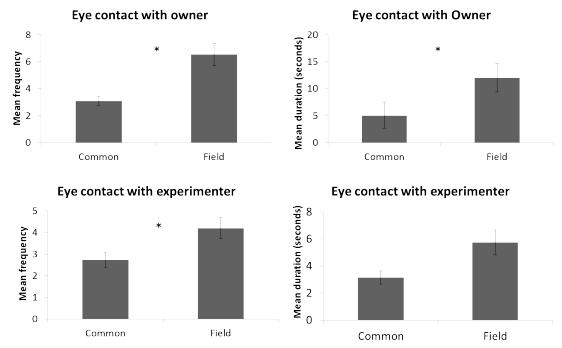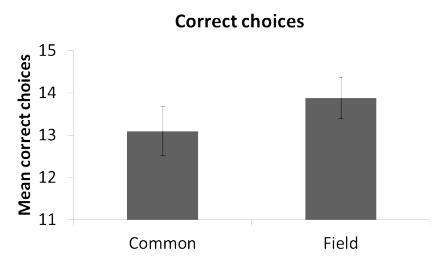Results
There was a significant difference in body posture between the two types. Field type Labradors had a lower mean score than common type Labradors, which means that field type Labradors appeared more secure during the problem solving test.
Significant differences between types were found concerning eye contact with both the owner and the experimenter. Field type Labradors sought eye contact with the owner with significantly higher frequency compared to common type Labradors. Field type Labradors also held this eye contact significantly longer than common type Labradors. The same was found for eye contact with the experimenter, where field type Labradors sought eye contact with the experimenter with significantly higher frequency compared to common type Labradors. Field type Labradors also showed a trend towards holding this eye contact with the experimenter longer than common type Labradors.

No significant difference between the two types of Labradors was found when comparing the number of correct choices during the pointing sessions one by one. However, when comparing the whole test, all 20 choices, a trend in the interaction between parameters type and sex was found, where field type Labrador males show a trend towards making more correct choices during the whole pointing session compared to common type Labrador males.

Conclusion
In conclusion, this study shows that there are behavioral differences in human-directed contact seeking behaviors between the two types of Labradors.
Since the types only have been separated for 40 years this study suggests that behavioral differences emerge early in the process of breeding with specific behavioral traits in mind. Additionally, this study suggests that the two lineages have developed in different directions due to different selection.
Responsible for this page:
Director of undergraduate studies Biology
Last updated:
06/19/15
